

The Internationalist

Nishimachi International School 2023-2024
Head of School
Director of Advancement
Advancement Office:
Marketing and Communications Manager
Alumni Relations/Advancement Officer
Karen O’Neill ’78
Mary Margaret Mallat
Martina Schaefer
Mayumi Nakayama ’90
Designer Koa Kellenberger ’16
Contributing Editor
Anne Papantonio
The Internationalist, School Year 2023 – 2024 Vol.71, is published by the Advancement Office for the alumni, parents, students, faculty, staff, and friends of Nishimachi International School.
Article Contributors
Photography
Maya Brauer ’12
Craig Cantlie
Joanne Elliott
Mary Margaret Mallat
Mari Matsumura
Cathy Noyes
Michael Strickland
Craig Cantlie
Ki Mae Heussner
Koa Kellenberger ’16
Kacie Leviton ’95
Shinya Masuda
Katie Mayne
Mayumi Nakayama ’90
Jack O’Neill
Martina Schaefer

Looking Back . . . Looking Forward
Welcome to The Internationalist! We have one issue this year and it is filled with news and inspiring stories that celebrate our school community.
It is a pleasure to introduce you to Craig Cantlie, Nishimachi’s new K-9 Principal. Craig, a Canadian and former principal in Dubai and Canada, brings his fresh perspective and dedication to the role and is making a positive impact on our community. We hope you enjoy getting to know him and reading his report of continued growth and success at our school.
Literacy has always been a cornerstone of Nishimachi, a legacy that began with our founder, Miss Tané Matsukata who started as a librarian, and whose love of books and learning has shaped generations of students. In this edition, we shine a spotlight on the teaching of reading, an essential skill that unlocks countless opportunities and a lifelong curiosity among our students.
We are also proud to highlight a story of student engagement in our participation in the annual Sakura Book Bowl competition. Nishimachi’s success in the competition reminds us of the enthusiasm and the joy that books can bring into our lives.
We take pride in celebrating the accomplishments of our alumni, including an interview with Alyssa Smith ’04, whose career as a journalist for The Japan Times illustrates the power of words to inform and connect people across the globe.
Advancement Office
2-14-7 Moto Azabu, Minato-ku Tokyo 106-0046 Japan
学校法人 西町インターナショナルスクール 〒 106-0046 東京都港区元麻布 2-14-7 渉外開発室
03-3451-5520
advancement@nishimachi.ac.jp alumni@nishimachi.ac.jp communications@nishimachi.ac.jp www.nishimachi.ac.jp
And last, as we look to the future, we are excited to invite you to our school’s 75th Anniversary celebrations. This milestone is not just a commemoration of our past, but a celebration of our ongoing journey and the vibrant community that makes our school special.
Thank you for your continued support and engagement. Enjoy this issue, and we hope to see you at our anniversary celebrations!
Karen O’Neill ’78 Head of School
Nishimachi International School

Alumni




ALYSSA SMITH ’04 proudly shows her front page article at The Japan Times office.
Stories to See Ourselves In
Ten-year Nishimachi vet Alyssa Smith ’04 crafts a career out of her lifelong love of reading and writing.
by Michael S. Strickland
A winning strategy
AAnyone who steps into Nishimachi’s gym during the warmer months of the year has Alyssa Smith to thank for the fact that, if they’re sweating, it’s due to their own exertions. “We campaigned pretty strongly to get air conditioning in the gym,” she recalls. “That was a major achievement during my tenure as president.”
This campaign to cool down the gym was preceded by a campaign for student council president for the 2003–2004 academic year, which saw Alyssa facing off against two other Nishimachi ninth-graders, Thomas Lewis and Arjun Mehta. “Arjun and I had been close friends since we were little,” she explains, “but there was a little bit of a competitive aspect during the campaign.”’
The election was not without its comical side. “To this day,” Alyssa laughs, “we still tease Arjun about the speech he wrote, because it wasn’t exactly a speech — it was a rap. People loved it.”
Alyssa went for a different strategy to claim the presidency: courting votes from the sixth graders, who made up a significant portion of the middle school but seemed overlooked by the older students. Alyssa’s little brother Gene and his band of friends helped rally support for her among their classmates. She went to the sixthgrade classrooms to speak to the students directly, not only as a candidate for student office but also as the older sister of one of their own. Making the youngest cohort of middle schoolers feel recognized paid off.
After winning, Alyssa’s duties as student council president included running weekly meetings where the students discussed and organized upcoming events such as the school dances. “We also participated in the interview process for one of the
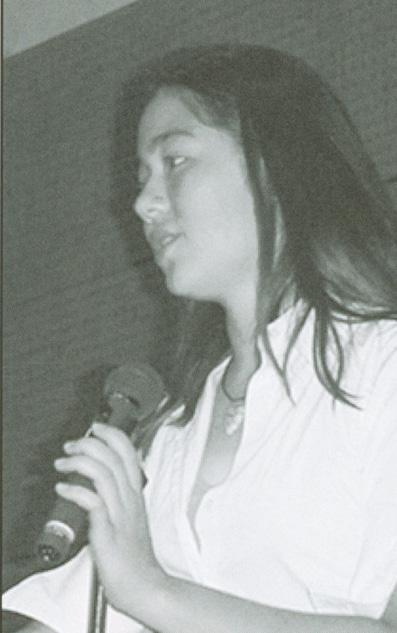
principals,” she adds.
Even after graduating from Nishimachi in 2004, Alyssa continues to represent her classmates, serving as the class contact for alumni. Despite the physical distance between her and the friends who have built their lives outside of Japan, she’s always eager to jump on a plane and attend the weddings of childhood friends — Scotland (Eric Carmichael), Tennessee (Claire Smith White), Turkey (Arjun Mehta) and, most recently, New Zealand (Charles HughesHallett) — to reunite, celebrate major milestones, and reminisce over shared memories.
Staying on top of the news
Alyssa’s flair for interviewing people, running meetings, and organizing projects that benefit the community, all the while keeping a sense of humor amid friendly competition, forms an ideal set of strengths to bring to
Left: Alyssa giving her campaign speech for student council president.
Bottom: Members of the 2003 –2004 fall semester student council in the MS commons.

her current role in the Life & Culture section of The Japan Times, the largest and oldest English-language daily newspaper in Japan.
“As Culture Editor,” she explains, “I’m responsible for our coverage related to film, music, art, stage, books, TV, and occasionally social media. It’s a wide range of topics to be responsible for, so it’s very busy.”
“I publish three pages a week, about six to eight articles total,” she continues. “My more entertainment-oriented pages run on Thursdays and Fridays. On Fridays, I have the back page of the newspaper. It’s a little more splashy and in color. That’s where our high-profile stories tend to go. I also have the Culture page on Saturdays for weekend-oriented reads.”
“In my day-to-day,” Alyssa explains, “I’m talking to writers, commissioning pieces, editing, designing the print pages, publishing the articles online, and doing research to make sure that we’re staying on top of

the news.”
How she matches article to writer depends, Alyssa points out, on both the topic covered and the writer’s attributes. “I primarily work with freelancers who have their areas of expertise,” she says. “They’ll come to me with ideas for stories, and those pitches are often fully formed since they already have the knowledge and experience to write a strong article. Sometimes there’ll be a major event like a famous singer performing in Tokyo, in which case I’ll try to find a writer who fits the story.”
The art of the craft
“Sometimes a writer and I will have to craft a story a little bit more,” Alyssa says, “to give it an interesting angle and make it something that people haven’t read before.”
This crafting of the story may take the form of simply gathering more information. “Sometimes,” Alyssa explains, “it just needs a little more depth, a little more context, a little more research.”
At times, it involves fine-tuning a translation. Once in a while, a writer who has interviewed someone in Japanese asks her to assess whether their translation accurately reflects the nuances of the original conversation. Or the crafting may take a direct, almost tactile approach. “Sometimes,” Alyssa reflects, “I restructure the article so there’s a clearer theme or
hook and readers can understand why they should be interested in this particular story. It’s like taking the clay of an already formed piece and remolding it. Not to change what the writer is saying, but to make it more interesting for people to read.”
Emphasizing the collaborative nature of the editor-writer relationship, Alyssa points out another side, which also happens to be an abiding passion. “I’m the editor,” she states, “but I’m coming to the piece as a reader as well.”
Competitive reading
Alyssa has been an avid reader since even before she entered Nishimachi kindergarten back in 1994. She recounts how reading was an important part of family life. “Every night my dad would read a book to me and my brothers (Ben and Gene) before we went to bed. And my mom played a huge part in helping me learn to read as well. When I was four or five, we were living in New York, and she would sit down with me and take me through every single word of a book. A love of literature just came very early on.”
When it came time to take the entrance exam for Nishimachi, that love of literature was already evident. “The teachers observing the potential students were surprised because I already knew how to read,” Alyssa recalls. “I have a distinct memory of reading a picture book while the other kids were playing. A teacher came up to me and said, ‘Do you like the pictures?’ ‘No, I’m reading it,’ I replied. I think being able to read on your own at that age was unusual then.”
Also unusual for the time, perhaps, was how soon she joined the Bookworm Club. “I think I was one of the youngest members to join,” Alyssa says. “I was in kindergarten or first grade. You would log how many books you read in a month. That made reading a competitive thing for me. I was like, ‘Oh, if I read a lot, I’ll win an award.’”
Alyssa doesn’t recall exactly what award she won, but the practice of consistent reading — founded in family togetherness and developed through positive reinforcement — continues to inform her abiding love of literature. In a podcast she hosted in December 2022, for example, Alyssa stated that, while her end-of-year plans included spending time with her family, she was also “four books away from reaching my goal to read 50 books in 2022. So, I want to settle
in with a blanket and do nothing but read for a while.”
Reading unapologetically
Nishimachi nurtured Alyssa’s love of reading in other ways as well. “We would come to the school library pretty regularly,” she says. “I remember in fourth grade or so, some girlfriends and I were interested in witches. Somewhere in a corner of the library, we found books vaguely related to witches. We became obsessed and tried to read about them as much as we could. Then we found sticks in the playground and pretended to cast spells.”
It was around this time that the Harry Potter books were becoming a global phenomenon. Like many children of her generation, Alyssa was enamored with the adventures of a young wizard growing up in a magical world.
“I remember when the last book in the series came out,” Alyssa says. “Someone got a copy of the book from the U.S. and we passed it around. One person would take it home, read it quickly and pass it on to the next person. There was so much excitement around it.”
Alyssa also recalls how she and her classmates also looked forward to the annual Scholastic Book Fair held in Nishimachi’s multipurpose room. “There were tables piled with books to buy,” she reminisces, “and we’d ask each other, ‘Oh, what did you get?’ And show each other our loot.”
One year, however, a well-meaning but misguided adult forgot the adage about not judging a book by its cover. The loot Alyssa craved was the second installment of Louise Rennison’s zany series, The Confessions of Georgia Nicolson, entitled On the Bright Side, I’m Now the Girlfriend of a Sex God
“I was trying to buy this book that was geared toward young adults,” Alyssa recalls. “But my friend’s mom said, ‘Oh, honey, this is inappropriate,’ and I felt so embarrassed. I don’t think I ever got around to reading it even though it’s part of a very popular YA series.”
Alyssa’s advice to young readers is to spurn such embarrassments: “Whatever is interesting to you, embrace it. Don’t be selfconscious about what it is you’re reading. Maybe there’s pressure to read the classics or the most well-known authors. But if, for instance, you’re interested in sci-fi — read sci-fi, unapologetically.”
Alyssa reading in fourth grade. Image from the 1998 – 1999 Ayumi.
“And if you want to be a good writer,” she adds, “you have to be intentional about your reading so that you’re not just absorbing it. Look carefully at why an author chose a certain phrase or how the pacing is moving along. Paying attention to those kinds of things makes you a better writer.”
Part of her being
Like many writers, Alyssa feels that writing has been a part of her being for as long as she can remember. “I’ve always been interested in writing,” she says, “and my teachers here at Nishimachi nurtured that.”
For instance, Alyssa’s third-grade English teacher gave her and her classmates a writing exercise in using all five senses to express something usually associated with only one sense. “The theme was the color red,” Alyssa recalls. “So everyone was writing about red in their own way. Mine was a poem about tomato juice — it was a very physical kind of piece.” (See sidebar, “What is red?”)
Then, in 1999, when Alyssa was in fourth grade, her first published piece, entitled “Why is it always my fault?”, appeared in the Asahi Shogakusei Shimbun, a national newspaper for elementary school students. “One of my Japanese teachers took a sakubun [作文] I wrote and submitted it to the paper,” Alyssa explains. “It was a short personal essay on a lesson I learned about being the eldest sibling.”
This early feat led to further encouragement. “One of my teachers in fourth or fifth grade,” Alyssa recalls, “wrote in my Ayumi, ‘I can’t wait to read your first book!’ So my interest in writing was always there.”
Alyssa took that lifelong interest in writing through high school at The American School in Japan to Tufts University in Boston, which she attended from 2007. “But because I had this multicultural background,” she says, “I was also interested in going into diplomacy. Tufts has an incredibly strong international relations program. I was an international relations major until I got to senior year, but I felt I’d regret graduating without having a degree in English as well. I had already been taking English literature and creative writing classes here and there throughout college, but I crammed in as many English classes as I could during my senior year and graduated as a double major.”
After packing in so much into her final year of college, it is understandable that
she might have felt like taking a breather after graduating in 2011. “I was a little bit exhausted,” Alyssa laughs. “I was trying to figure out how to pursue my career in writing, but I also wanted to give myself a grace period.”
Alyssa returned home to Tokyo and, having maintained contacts at Nishimachi, was able to work part-time in the IT Office, and also as an assistant in the Administrative Office. Then, in 2012, Nishimachi’s head of school asked Alyssa if she was interested in working full-time as an assistant teacher in the kindergarten. “I said I would love to,” she says.
Alyssa admits to being very impressed by the literacy level of the kindergartners she worked with from September 2012 to August 2013. “Even though a lot of them were coming into the school structure for the first time,” she says, “they were already being taught how to write pieces that had a beginning, a middle, and an end. I don’t remember doing something that advanced when I was in kindergarten!”
Finding her way
After two years in Tokyo, Alyssa continues, “I went back to Boston to work as a freelance writer. For a while, I worked at a stationery design company where I wrote
descriptions of their products and posts for the company blog. I also worked in the news office at the Massachusetts Institute of Technology, collating coverage about the university for the administrators and fielding inquiries from journalists.”
In the spring of 2014, Alyssa began writing content for a digital development company based in Kichijoji. “They were creating a travel app ahead of the Olympics,” Alyssa explains. “They asked me to write all the English content about things to do in Japan, descriptions of restaurants, and such.
The job brought her back to Tokyo, but due to a competitive market, the app project was scrapped shortly after she returned home. Her boss asked her to take on the role of a full-time project manager instead. Although the job allowed her to work with clients in areas such as cyber security, health care, pharmaceuticals and consulting, she admits she wasn’t thrilled with the direction her career was heading in after two years at the company.
“I started looking for jobs and found three openings at The Japan Times. I immediately knew I wanted to work there,” she says before adding with a laugh, “I applied to all three positions.”
That was in the summer of 2017. While

“What is red?” — Alyssa’s poem from third grade about tomato juice and the color red. Scan provided by Alyssa Smith.
she was determined to work in any of the three positions, one in particular appealed to her. “The Life & Culture section felt like a perfect fit for me,” Alyssa specifies, adding that she wanted to be a part of telling informative stories that could benefit people. “I grew up very involved in performing arts

like dancing ballet for ten years and playing the violin in my high school orchestra. I also practiced ikebana and tea ceremony with my mother and grandmother. I felt like a lot of my interests — books, performing arts, traditional arts — aligned with the areas the Life & Culture section wrote about.”
“I started as an Assistant Editor, and then got promoted to Culture Editor during the early days of the pandemic. So, for the last six and a half years, that’s where I’ve been — the Life & Culture section of The Japan Times.”
Putting herself out there
Alyssa admits that being Culture Editor means that she doesn’t have time to write as much as she would like to. “But I do have other opportunities to put myself out there,” she adds.
There is, for instance, the newspaper’s ongoing podcast, Deep Dive, currently up to its 181st episode. “Occasionally,” Alyssa explains, “I come onto the podcast as a host or as someone who’s part of a conversation with other editors and writers.

“At the end of 2020, we did a special podcast series called Recultured. It’s a four-part series where we talked about major events and trends in pop culture that happened in response to the first year of the pandemic. I’m really proud of that. My colleagues and I put a lot of work into it.”
In addition to lending her voice to the podcast, she has appeared on camera for the newspaper as well. “We did a project tied to the 2019 Rugby World Cup where we created travel videos about what to do and where to go in each of the host cities around Japan.”
The project entailed traveling to different cities with a videographer and exploring castles, aquariums, skyscrapers, and shopping districts. Alyssa appears in at least three of those videos — “A weekend in Kobe,” “A weekend in Osaka,” and “A weekend in Yokohama.” The articles she wrote to accompany the videos were published in The Japan Times Travel section. A lot of work also goes into another part of the newspaper. “I do have a soft spot for my Books section,” Alyssa admits, “just be-
“
Whatever is interesting to you, embrace it. Don’t be self-conscious about what it is you’re reading. Maybe there’s pressure that you’re supposed to be reading the ‘classics’ or the most well-known authors. But if, for instance, you’re interested in sci-fi — read sci-fi, unapologetically.
— ALYSSA SMITH
Alyssa in the 2012 – 2013 Ayumi, now on the teaching side.
cause I’ve loved books since I was very little and Japanese literature is becoming very popular. I think I look forward to reading and editing articles about books the most.”
Alyssa explains that the Books section often features interviews with translators, who have been an integral part of Japanese literature’s rising popularity outside of the country. “It’s nice to see that Japanese literature is being appreciated abroad,” she says. “A lot of this is because of the strength of the translators.”
And yet, despite all the time and energy taken up by podcasts and editorial tasks, Alyssa’s pen, so to speak, has not been entirely idle. A look at The Japan Times website, for instance, turns up at least 50 pieces she’s written since starting there (see sidebar). And that number doesn’t include her Deep Dive podcasts (10) or her Terrace House recaps (23).
“It’s very fulfilling to write about things that interest me. I’ve loved working on pieces like a review of a Cirque du Soleil show in 2018, my Fuji Rock Festival report in 2019, and the year-end wrap about books in 2022. There is still so much more I want to write about.”
Multicultural kids
Alyssa describes the contrast she sees between the way multicultural kids are portrayed in media and the reality of growing up as one. “The way multicultural kids are represented in novels, TV shows, and movies,” she explains, is different from her experience at Nishimachi, where “being multicultural is not just recognized but supported and celebrated.”
“In many of the stories I see now about people who are bicultural or multicultural,” Alyssa continues, “they’re portrayed as outsiders or they’re unsure about their identity.

“I’m aware that many of those stories are based on people’s lived experiences. And they are important stories to tell. But growing up here, many of the kids I went to school with looked like me or spoke like me — or they didn’t and we could learn from each other. I was able to feel joy about who I am and figure out my identity based on my personality, not whether I felt more Japanese or more American. Nishimachi is a special place to me because I was able to have that upbringing. I want there to be more stories about the joys of a mixed background, too.”
Her parents met in Tokyo, where her Japanese mother was attending Ochanomizu University and her American father was going to graduate school. In a way, Alyssa has followed a similar path as her mother, who worked as a copy editor in the marketing department at Time magazine after graduating from college as an English major. After her parents married, they moved to Atlanta, Georgia, where Alyssa was born. Her family moved back and forth between Tokyo and the U.S. during her early years, but she mostly grew up in Tokyo.
Though her parents are fluent in English and Japanese and spoke both languages at home, English had become Alyssa’s primary language while the family was living in New York. “So when we moved back to Tokyo (in 1994), I kind of relearned my Japanese by watching Sailor Moon,” Alyssa says with a laugh.
Once she entered Nishimachi, having two languages became even more a part of her life. “Nishimachi has Japanese classes every day,” Alyssa says. “Also, it’s a very small school, very intimate, and a lot of the friendships I made here have continued into my adult life. There’s a sense of community, which makes this school really special.”
“In the future, I would like to write about embracing the aspects of yourself that are different. I want more stories in which I can see myself to be out there. I think a lot of people who have mixed backgrounds or went to international schools would be interested in those kinds of stories, too. Being multicultural doesn’t have to be something that makes you feel alienated or different — it can be a very positive and important part of you to treasure.”
Kabuki actor Ichikawa Ennosuke found collapsed after suspected suicide attempt (May 18, 2023)
Fuji Rock offers escapism once again (December 11, 2022)
Maxwell Powers: ‘You have to be competent, yet invisible’ (October 11, 2021)
Want to know Japanese cinema? Get to know Mark Schilling (January 18, 2020)
Yumi Matsuo: It’s a different picture in the United States (February 1, 2020)
A weekend in Yokohama: The instant attraction of Tokyo’s neighbor (August 9, 2019)
Debate continues over mothers taking their babies to work (January 13, 2018)
Here’s a list of some of the articles Alyssa has written for The Japan Times . . . and many more!

Deep Dive is available on Spotify, Apple Podcasts, and the official Japan Times website.
Brain Research, Literacy Trends, and the Science of Reading
What
is the best ways to engage students in literacy and language learning? At Nishimachi we are building on what students know across all of their languages.
by Joanne Elliott
Throughout Nishimachi, there has been a long tradition of rich literacy engagement, from children working tirelessly to review and publish their writing in school newspapers, books, and collections, to participating in readathons, Sakura book bowls, and poetry slams. There is deep and authentic engagement in reading among our students, a journey that begins at home with families who value literacy and language learning as much as we do at Nishimachi.
From my involvement in literacy at Nishimachi, there have been 3 curriculum reviews, and fundamental changes in the way we have approached literacy at our school over the past 15 years, and it has been exciting to be part of an evolution that has reflected literacy trends across the world.
Student-centered learning
One of the most significant changes in literacy was the adoption of the Common Core State Standards initiative, outlining challenging academic expectations with the ultimate goal of college readiness. This initiative was not only embraced in the US but also by many International Schools. The subsequent development of pedagogy and resources to support these standards prompted a closer look here at Nishimachi. Around 2013, we initiated a shift towards student-centered learning, differentiation, student choice and agency, and scheduling dedicated time for children to develop as readers and writers. Adopting a workshop philosophy and structure, coupled with the Common Core Standards helped us estab-

Read-alouds strengthen vocabulary acquisition, comprehension, emotional intelligence, cultural and social understanding, and increase teacher and student engagement.
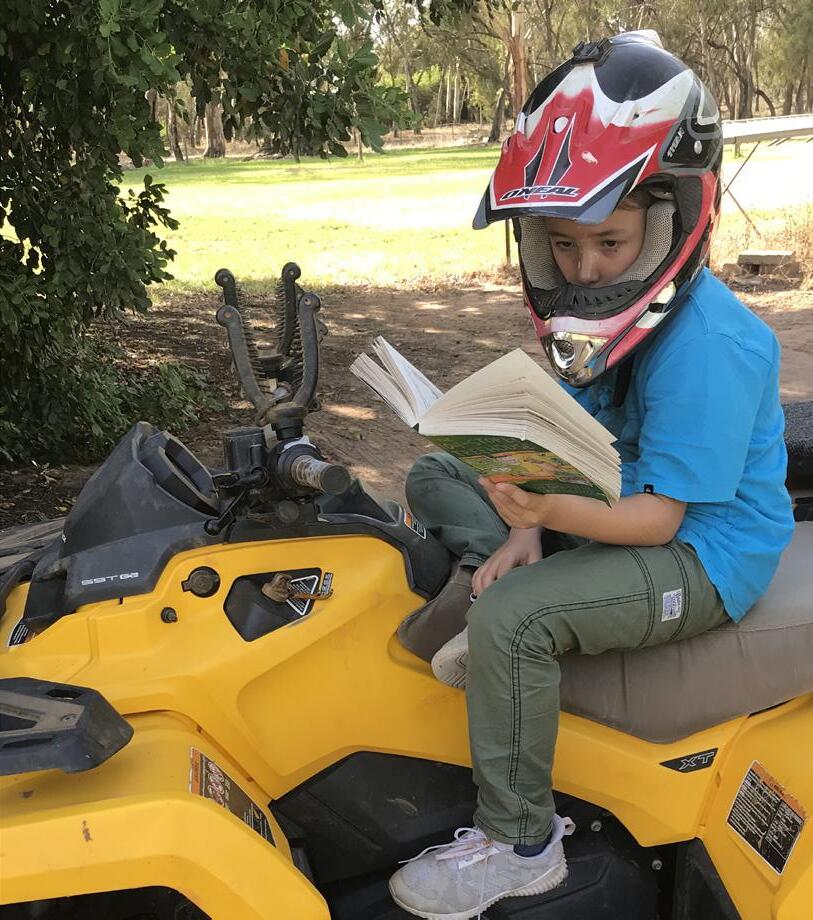

lish vertical articulation across K–9 classrooms. Our students became accustomed to a routine that began with a focused reading or writing strategy demonstrated and modeled by their teacher. Students were then invited to try, identify or inquire further into the strategy and add it to their repertoire as readers and writers as they went off to independently create and explore. The structure of reader’s and writer’s workshop ensured that teachers could maximize the time they had supporting a diverse group of students, while students could spend time every day reading and writing, receiving feedback, setting goals, and sharing their ideas with others.
Literacy lab-sites
Following the adoption of the Common Core State Standards, we enhanced the capacity of our literacy teachers through ongoing relationships with international consultants and literacy professionals such as Maggie Moon and later Erin Kent. Teachers and students became familiar with and participated in literacy lab-sites across the school. These were opportunities for teachers to co-teach and learn together in a classroom, discuss ideas and wonderings with each other, and develop their understanding of literacy teaching. Our work with Erin Kent also included cross-curricular literacy learning, emphasizing all teachers as language teachers, and integrating literacy across disciplines.
TNK support
An essential investment in literacy was the TNK grant, funding high-quality and engaging classroom libraries. These libraries not only made amazing books accessible to every student but also became a hub for each classroom and student reading community. Nishimachi parents not only funded this significant change but also actively participated in setting up each library, ensuring accessibility and interest for everyone. Later, combining English and Social Studies in middle school and adding diverse classroom libraries to middle school classrooms, helped to embed the use of relevant and varied content, engaging students in authentic literacy. Writing to argue real and challenging issues, speaking with impact, and developing an understanding of ethics. This approach deepened the connections students made to our Nishimachi Learner Expectations.
Literacy and identity
In recent years, we carefully examined the latest brain research specific to our students, understanding how multilingual learners engage in literacy and language learning. Our goal was to leverage this science to amplify literacy for our student demographic at Nishimachi. This led to a greater understanding of multilingualism, use of translanguaging techniques and designing learning that leveraged students’ whole language repertoires to build literacy connections, connect to identity, and engage learners across languages. This

was the beginning of understanding the essential link between literacy and identity.
Students engage in reading, writing, speaking, and listening activities across languages. To foster multilingual development and by taking an asset-based approach to learning we can build on what students already understand and know across all their languages. Growing and developing Translanguaging practices in our school assists in building the entire linguistic repertoire of our students, as well as recognizing and connecting to their linguistic identities and multicultural experiences. When students are able to bring all of their languages into a classroom they are able to bring in all of their knowledge, perspectives and experiences. Translanguaging is rooted in the creative and critical process in which multilingual people use their language and other resources in dynamic, flexible, multimodal, semiotic, and purposeful ways (García, 2020).
Embarking on our most recent review we aimed to capture the success of literacy at Nishimachi. Our group of dedicated literacy specialists (Marcella Catania, ELL specialist, Jennifer Toyoshima, 2nd grade homeroom and Reader’s and Writer’s Workshop specialist, Marie Herrera, 5th grade teacher and inquiry specialist, Kathryn Rutherford, Humanities teacher and English specialist, Nina Kelly, kindergarten and grade 1 homeroom teacher and Foundational Skills specialist and Joanne Elliott, K-9 Literacy leader) collected research and data across key focus areas which was
analyzed and collaboratively evaluated. Recommendations for literacy learning aligned with this research and identified curricula, pedagogy, and resources to maximize literacy potential for all students. The timing was perfect, aligning with discussions that were current around the world connecting brain research, literary trends, and the Science of Reading. Understanding the Science of Reading was invaluable in ensuring a continued focus on being a reading-rich community. Literacy would facilitate the development of our students as capable, critical and analytical readers of the world. Moving forward, the reading curriculum would incorporate components connected to the Science of Reading, including deliberate, systematic, and explicit teaching of word recognition, subject matter knowledge, vocabulary, sentence comprehension, and familiarity with language in written texts. There would be explicit guidance for teaching word recognition and language comprehension, along with the common instructional practices and approaches that address these. Additionally, we would reemphasize a dedicated portion of literacy time where phonics and vocabulary could be taught sequentially from a clearly defined scope and sequence. An interdisciplinary approach would be crucial, integrating Social Studies, Science, the Arts, and other
content areas into reading units. Students would make connections between what they are reading, writing, and experiencing, giving reading context and purpose. As we build the literacy experience and learning at Nishimachi we are once again fortunate to have the support of the TNK in funding a renewal of our classroom libraries. As a team of educators we will assess, review and add books to the classroom that will give our students windows on the world and mirrors of themselves.
Read aloud
An Integral part of every classroom K-9 is the read aloud. Most of us recall a favorite book that a teacher or parent read to us in the classroom or at home. Sometimes the read aloud experience disappears as students get older and sometimes we rediscover the joy of an audio book as adults. The pedagogical approach to read-aloud is not only an act of listening but also one of the most effective avenues for vocabulary and morphology instruction. Read-alouds strengthen vocabulary acquisition, comprehension, emotional intelligence, cultural and social understanding, and increase teacher and student engagement. At Nishimachi, we prioritize allocating dedicated time for language instruction and read-alouds, building vocabulary across all subjects and grade levels.

deepen inquiry, at first in Social Studies and Science and further as the school develops inquiry based learning across the curriculum.
As a team of educators we will assess, review, and add books to the classroom that will give our students windows on the world and mirrors of themselves.
Staying up-to-date with current trends and developing learning based on evidence, our team recommended adopting an approach to literacy which emphasized conceptbased, differentiated, and inquiry-based learning.
This shift, through a school-wide effort, will strengthen and enhance the effectiveness of literacy learning. The already existing and developing inquiry based learning at our school will open up opportunities for literacy to amplify and
What does all this look like for literacy at Nishimachi? Ultimately our students will continue to grow as communicators, advocates and critical information gatherers. They will read with joy and curiosity, write and advocate on issues they care about, and speak with others to make connections and grow their own understanding of the world. In classrooms we see students listening and discussing shared read-alouds, creating interpretations of stories, publishing their work and sharing it with others, while learning the sounds and blends shaping their understanding of the world.
García, O. (2020). Translanguaging and Latinx bilingual readers. The Reading Teacher, 73(5), 557–562.
Nishimachi engages in literacy events such as author visits. Reading with students is author Marissa Moss.

Stories from the Museum

Aruhi: The Haiku of Karasu
Where cloud and feather meet in the ethereal sky— I am Karasu.
— Jonathan Derksen
Nishimachi was delighted to receive a copy of Jon’s book signed and inscribed with the words: “To Nishimachi, where I learned to love reading and writing.” As we explored the contents we were captivated by Jon’s description of his life experiences in Japan and the central role of Nishimachi.
Written over a 12 year period, the haikus are categorized by traditional Japanese Kyureki seasons, beginning and ending with Yayoi (March). While reveling in the beauty of nature’s stillness and change, Jon also turns his gaze inwards to the multifaceted emotions that stir within, all in the 5-7-5 syllable pattern. In classic third-culture-kid fashion Japanese words and images flutter in and out of the pages like his childhood memories of the verdant Japanese countryside.
Jon’s journey from Nishimachi to becoming a published haiku poet is a testament to the enduring impact of the education and experiences at our school. We are proud to have been a part of his journey and to see the seeds of creativity planted here blossom into a lifelong passion. Jon’s book is more than a collection of poems; it is a bridge connecting the past and present, showing how the love of reading and writing nurtured at Nishimachi continues to inspire and resonate.

Jonathan Derksen ’81
The child of Canadian diplomats, Jonathan moved to Tokyo with his parents and sibling in 1973, and enrolled in Nishimachi in 1975 and remained for grades 4–7. He writes: “My childhood memories of Japan often appear in my writing, in the references I use, in the well of experience from which I draw. My love of the haiku started in primary school…”
A Collection of Haiku by Jonathan Derksen ’81

CraigCantlie
A Self-Introduction to the Alumni Community as Nishimachi’s Kindergarten to Grade 9 Principal
Leading the Charge at Nishimachi International School
by Craig Cantlie
A Journey of Passion and Innovation
“Our task is to educate our students’ whole being so they can face the future. We may not see the future, but they will, and our job is to help them make something of it.”
— Sir Ken Robinson
The Element: How Your Passion Changes Everything
In 2006, Sir Ken Robinson’s groundbreaking TED talk revolutionized conversations about education worldwide. His ideas profoundly impacted me as an educator, reinforcing my belief in the boundless potential of children. This impact continues to shape my vision and leadership at Nishimachi International School.




From Dubai to Tokyo: A Family’s Global Adventure
In 2022, my family and I made a bold decision that brought us to Nishimachi International School. After four years in Dubai, we embraced the “what’s possible” sentiment and put our careers on hold to embark on a global adventure. Our journey took us to Iceland, Italy, Greece, and Egypt, where our son’s curiosity blossomed. He connected ancient civilizations and mythology, bringing his grade 6 Ancient Civilizations curriculum to life through museums, historical landmarks, and guided tours. This experiential learning ignited a wonder that traditional classrooms rarely achieve.
Redefining and Redesigning the Classroom
Reflecting on my experience in traditional classrooms, with its rows of desks and rote learning, I have always aimed for something better. Today’s students deserve a learning experience that prepares them for a rapidly changing world. My vision is to create learning ecosystems and experiences that lead the way and foster innovative and inquiry mindsets.
This vision is a result of my educational journey that began at the University of British Columbia, where I joined a newly created Problem-Based Learning cohort. This experience, that centered on educational research, inquiry and action, set my path as an educator and leader. It taught me the value of realworld experience, agency in learning, and the power of community.




Innovative Leadership and Global Partnerships
As Principal of Nishimachi International School, I believe in the power of inquiry, innovation, and community. Our partnerships with global leaders in inquiry learning, such as Trevor MacKenzie and Kath Murdoch, highlight Nishimachi’s opportunity to be a lighthouse school for education and learning. My work focuses on rethinking school lessons and spaces that are process driven learning and the creation of flexible learning environments that mirror modern workplaces like Amazon and Google, fostering creativity and collaboration

Building a Strong Community
Community is at the heart of Nishimachi. In my previous roles in Vancouver and Dubai, school identities like Be the Bear and Leopard Pride brought communities closer together. At Nishimachi, “We Are Nishimachi” resonates deeply, capturing our legacy, alumni, current students, and Tané Matsukata’s vision of a special identity.




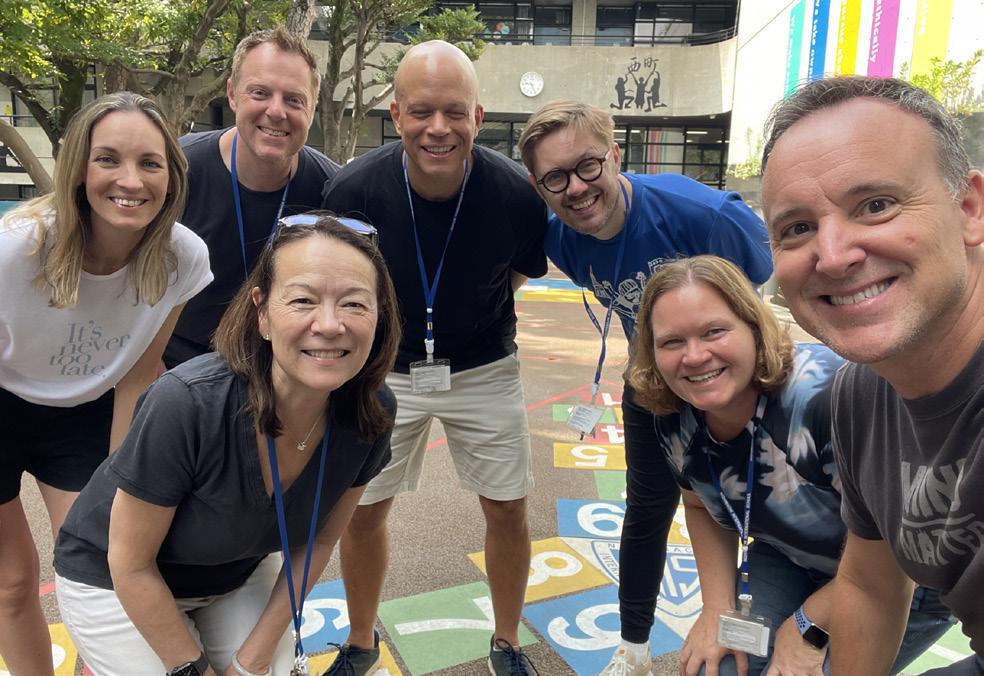
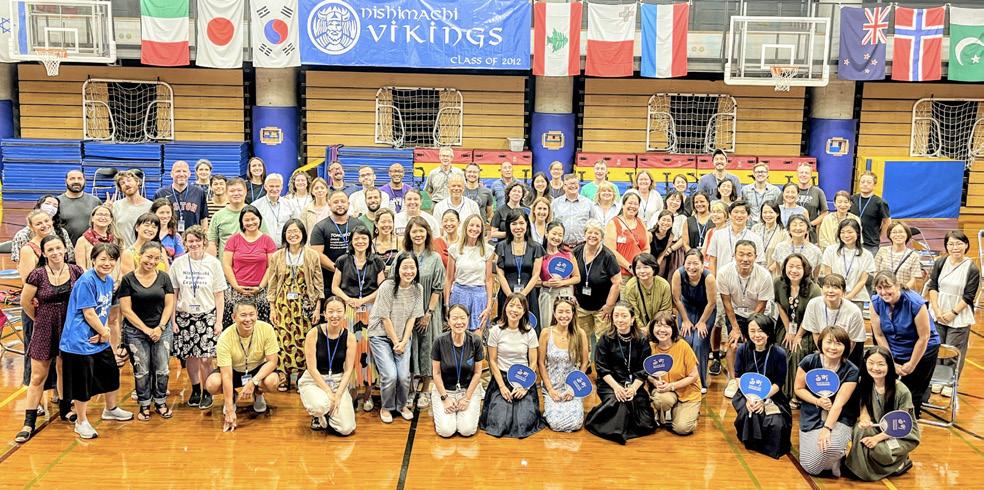
Embracing the Future with Confidence
As Principal, I am excited for the future of Nishimachi International School. The world will continue to evolve, and our students must be prepared for these changes. Teachers will play an increasingly vital role, guiding students through this dynamic landscape.
In 2024 – 2025, as we celebrate our 75 year history, we will take time to reflect on our journey, celebrating our story, rituals, and successes; while also looking ahead with confidence, that Nishimachi International School will be an innovative leader in learning for years to come. Sir Ken Robinson would be proud.
We are Nishimachi!


The Annual Walkathon
On a sunny day in late November, with the Ginkgo trees nearly in full golden hue, over 350 parents, students, alumni, and alumni parents gathered at the historic Meiji Jingu Gaien for Nishimachi’s annual Walkathon. This beloved tradition, now in its 11th year, raises funds for the Outreach Scholarship Program, which was started in 2003, Outreach Scholarships have funded over 30 students attending Nishimachi and paid for nearly 120 annual tuitions at the school.
The Walkathon remains a cornerstone event, supporting a truly worthy cause. The Outreach Program is entirely funded by donations, and every contribution makes a difference. Donations for this fiscal year are accepted through July 31, 2024
You can make a difference today!
Please donate to the Outreach Scholarship Fund.


nishimachi.ac.jp/giving/online-giving

Outreach Scholarship Program for a diverse community
Outreach Scholarship Program community
of learners

“
The opportunity to attend Nishimachi is a once-in-a-lifetime gift. The memories I made were thanks to the dedicated teachers, the fun-loving classmates, and the generous donors who made it all possible. This gift will always be cherished. Thank you, Nishimachi.
— OUTREACH RECIPIENT
Mark your calendars for the next Walkathon on November 16, 2024

We look forward to your participation and support!
Champions of the Sakura Book Bowl 2023
by Cathy Noyes

My heart pounded as we answered question after question...
— MICHELLE
Winning Sakura Medal Book Bowl Team Member, 2023
Michelle’s engaging reflection on her participation in the 2023 All-Japan Sakura Medal Book Bowl summed it up for all the participants and attendees at the competition. The competition livestream was watched closely by students, parents and teachers, all riveted to their screens. While the 12 members of the Nishimachi team proudly raised the trophy at St. Mary’s, the whole Nishimachi campus burst into cheers after hearing Mrs. O’Neill’s announcement that our Book Bowl team had won the national competition for the first time in Nishimachi history!
The Sakura Medal Reading Program offers opportunities to
commit, collaborate, connect, and celebrate! Students from grades 1 – 9 can join the reading challenge, the art contest, the book trailer contest, and the Book Bowl. After reading the required number of Sakura books, they can vote for their favorite books, get their face on the Sakura Tree bulletin board, be celebrated at assembly and on the school’s social media, and of course, join the final popsicle party! And with pride and confidence in success comes the motivation to do it again.
The program also serves as an excellent collection development tool for international school libraries in Japan. Titles are curated by dedicated and experienced librarians and Japanese teachers
who know their students and their learning communities well. We come together to read, discuss and decide on selections for each category every year. A well-rounded library collection reflects our commitment to curriculum standards, to the Nishimachi Learner Expectations, social emotional learning constructs, and our mission to embrace diversity, active learning, and communication.
Since the inception of the Book Bowl in 2009, it has grown to be the highlight of the Sakura Medal program each April, especially for upper elementary students. This is an opportunity for grades 4 and 5 to showcase their passion for reading and their knowledge of the Sakura books. Through Nishimachi Book Bowl rounds, students vie for coveted spots on the final team that will compete against the other international school teams. Students read (and re-read) a number of chapter books, study them carefully, and become their team experts to correctly answer questions on the titles they’re responsible for. In 2023 we had 11 hopeful teams with an average of 4 team members and 20 chapter books to be read!
What the winners had to say. . .
Book Bowl was a special experience for me, I didn’t know I could make it to the final team on my own!
Eugene Grade 4 Participant


It was a really nice way to get to know my classmates. We met every Wednesday afternoon to practice but we also became close friends.
Carina Grade 4 Participant
Book Bowl was an exciting, humbling experience that helped me create closer relationships with my friends... I think that book bowl is a really amazing experience for people who love to read and I am so glad that I got to participate.
Nishimachi librarians promote the reading challenge, prepare the classes for the excitement ahead, encourage, motivate, and support all readers (and parents), help organize teams and the reading schedules and run the preliminary rounds. Librarians from the participating schools collaborate on planning and sharing the work for the All-Japan Sakura Book Bowl. Throughout the school year we review every single written or recorded reading response from Book Bowlers submitted on SeeSaw for every book read by every student on every book bowl team. . . plus the responses by other program participants. Whew! Encouraging a love of reading is a high priority at Nishimachi. The Sakura Medal program recognizes and supports the reading culture of our school community and our goal of raising lifelong readers and learners. Reading challenges broaden students’ horizons and Sakura Medal titles are a diverse selection with a variety of genres, cultures, and perspectives to explore. They foster empathy and compassion, build students’ knowledge base, and offer opportunities for success as a reader in both English and Japanese. We’re all familiar with the Nishimachi Learner Expectations. They inform our days and structure our actions and learning. Our students and Book Bowlers take these to heart.
When students read regularly, they develop essential literacy skills like vocabulary, comprehension, and critical thinking. The more they read, the more authentic practice they get with decoding and reading fluency. Reading challenges inspire both the avid reader and the reluctant reader, and all reading creates a scaffold onto which to build new knowledge and make new connections. What never fails to delight those of us involved
Addy Grade 4 Participant


Nishimachi’s Team 4, from top left: Elizabeth, Carina, Meg, Maya
in this annual challenge is the incredible ways that every child reacts to and reflects on the titles they read, how they grow their knowledge and skills with every selection, and how encouraged and fulfilled we are to witness all this. Reading responses are set up as active reading strategies to help students critically think about the text. This allows students to not only “just enjoy the story”, but to make connections with characters, author’s purpose, literary devices, other literature and their own experiences.
Although we are extremely proud of our students’ achievement, we firmly believe that the Book Bowl is not about winning. It is about building positive relationships with their peers and challenging themselves as readers and learners to grow beyond their comfort zone.
Parents and other readers in the family and community support reading habits by acting as role models reading alongside their children, reading Sakura titles to their children, and helping them complete their reading responses and passports. Committing to even reading five picture books can be a challenge for the reluctant or beginning reader, but with support from friends, peers, and family, it sets kids up to see themselves as successful readers. The Sakura Medal program is a tremendous way to involve families in their child’s literacy development, and to be active in the learning community.
Some words from the parents. . .
Our younger daughter watched Carina get involved with Book Bowl and wanted a piece of the action... we were able to finish all (the Sakura Picture books). It really sparked her interest in reading. As parents, we were very proud to watch the NIS team bravely face the pressure and keep their cool. All the hours of preparation and dedication paid off against tight competition. I also wanted to say how much we appreciated the library teachers for the huge effort that goes into preparing for the competition!
Jan Gleeson Former Nishimachi Speech and Language Pathologist and Book Bowl chaperon


When Maya first told us she had joined a Sakura Medal Book Bowl team, we were just happy she had found an outlet for her love of reading and an opportunity to get to know other students. But we realized she had stumbled into something very special... It was really magical to watch the experience unfold and we know it will always be a highlight of her time at Nishimachi.
Ki Mae Heussner Nishimachi parent


the QR code or visit the link below for more information.
sites.google.com/view/sakuramedal

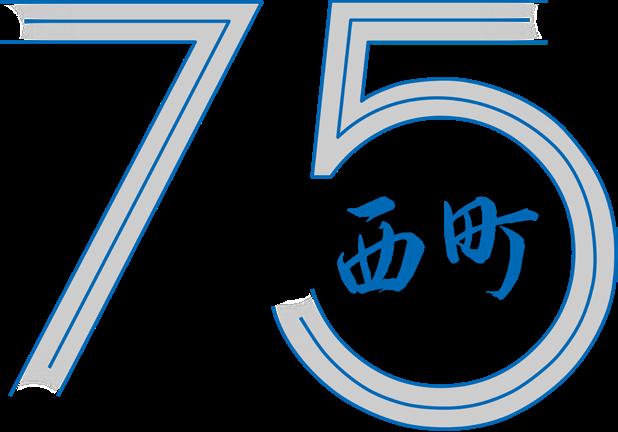
YEARS
For Nishimachi’s 75th birthday, we want to invite the entire family back to celebrate our special connections at the Anniversary Alumni Weekend!

Anniversary Alumni Weekend
March 27-30, 2025 Tokyo, Japan
Opening Reception Thursday Evening
Campus Visit Friday Morning
Alumni Luncheon Friday Afternoon
Decade Dinners Friday Evening
School Activities Saturday Afternoon
Anniversary Dinner Saturday Evening
Excursions Sunday

Join us for a toast and light refreshments in celebration of our special connections.
Revisit your classrooms and see how the Nishimachi campus has evolved.


After touring the campus or giving a talk to current students, join a luncheon on campus.

Reunite with your classmates and teachers at dinners around the Tokyo area.


Daytime activities on campus: athletics, arts and crafts, music and more.
A dinner to celebrate with all members of our Nishimachi family.


An optional trip for families to visit Kazuno, another mountainous area, or a resort town.

Scan the QR Code for more information bit.ly/nishimachi75th










Next Year’s Food Fair
Oct 26, 2024
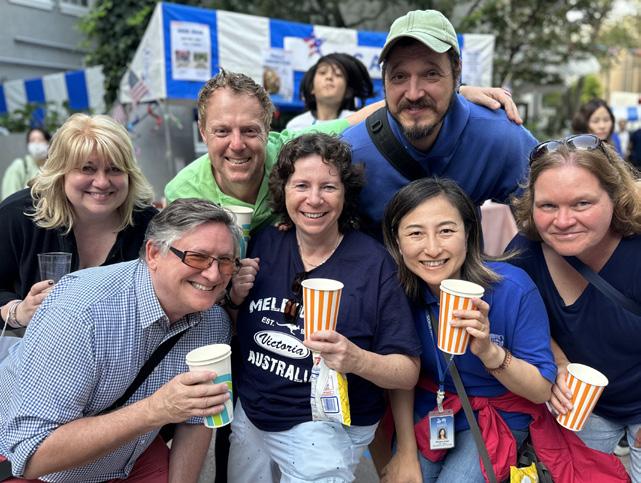




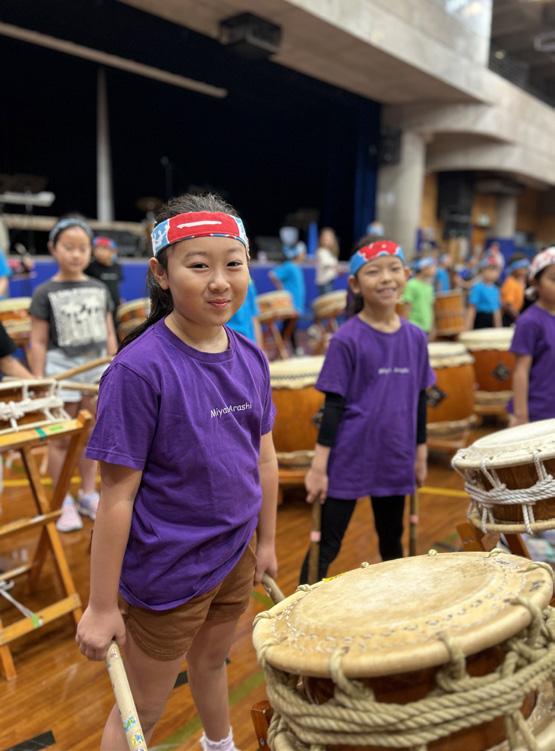









POSTMARKS Connect With Us





We have removed the Postmarks section (pages 25 – 33) from the online version for privacy reasons.
If you are a Nishimachi-Kai member, please email us at alumni@nishimachi.ac.jp
Class of 2020 Universities Attending
Barnard College
Boston University
Bowdoin College
Brown University
Carnegie Mellon University
Cornell University
Dartmouth College
Georgetown University
Gilon Institute of Higher Education
Imperial College
Keio University
McGill University
Melbourne University
New York University
North Carolina State University
Northeastern University
Politecnico di Milano
Rhode Island School of Design
San José State University
Santa Clara University
Sophia University
University of California, Berkeley
United States Air Force Academy
University College London
University of Amsterdam
University of Arts London
University of British Columbia
University of California, Los Angeles
University of Chicago
University of Colorado Boulder
University of Manchester
University of Southampton
University of Toronto
The University of Utah
University of Warwick
University of Wisconsin–Madison
University of York
University of Southern California
Virginia Tech
Waseda University
Wellesley College
Yale University
U.S.A.
U.S.A.
U.S.A.
U.S.A.
U.S.A.
U.S.A.
U.S.A.
U.S.A. Switzerland
U.K. Japan Canada Australia
U.S.A. U.S.A.
U.S.A. Italy
U.S.A.
U.S.A.
U.S.A. Japan
U.S.A.
U.S.A.
U.K. Netherlands
U.K. Canada
U.S.A.
U.S.A.
U.S.A. U.K.
U.K. Canada
U.S.A. U.K.
U.S.A. U.K.
U.S.A. U.S.A. Japan
U.S.A. U.S.A.
Class of 2023 High Schools Attending
The American School In Japan
Aoba-Japan International School
Bennett Day School
The Bishop’s School
Brentwood College School
The British School in Tokyo
Canadian Academy
Collège du Léman
d’Overbroeck’s International School
EF Academy
Highland Park HS
Hiroo Gakuen Senior HS
Hiroo Gakuen Koishikawa Senior HS
The Hutchins School
International Christian University HS
Jakarta Intercultural School
K. International School Tokyo
Kaetsu Ariake Senior HS
Keio Academy Of New York
King School
Lake Forest Academy
Liceo Scientifico Leonardo Da Vinci Milano
Lower Canada College
The Madeira School
Mid Pacific Institute
Mita International School
New Roads School
NIST International School
Pine View HS
Sacred Heart Greenwich
San Dieguito Academy HS
San Ramon Valley HS
Seisen International School
Seoul International School
Shibuya Kyoiku Gakuen Makuhari Senior HS
Shrewsbury School
Southbank International School
St. Mary’s International School
Saint Maur International School
Stevenson School
Swiss International School
The Taft School
Tamalpais HS
Toyo Eiwa HS
University of Tsukuba Senior HS
UWC ISAK Japan
UWC South East Asia Dover Campus
Vienna International School
Westmoor School
Yokohama International School
York Prep School
U.S.A. Thailand
U.S.A.
U.S.A.
U.S.A.
U.S.A.
Japan
U.K.
U.S.A. Switzerland
U.S.A.
U.S.A.
Japan
Japan
Japan
Singapore
Austria
U.S.A.
Japan
U.S.A.
Yokoso!


ようこそ
Welcome to the Nishimachi Family!


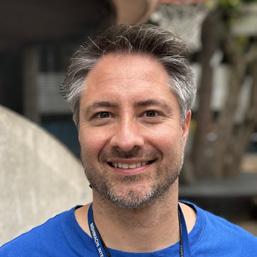












Sayonara!
2022 – 2023 Departures
Isao Hayakawa, Heather Kreuze, Anita Lee, Jennifer Lee, Dominique Lutringer, Matt Marson, Chris Nelson, Kalpana Rao, Kathryn Rutherford, Laurel Yamashita, Jonothan Yoon
Good luck with your future endeavors!

Congratulations Class of 2023!
Craig Cantlie K-9 Principal
Mayca Chung MS Humanities
Brice Dreux-Besnard ES PE
Symbol Fabellon Learning Innovation & STEAM
Joanne Gauthier Grade 1
Maya Brauer 75th Anniversary Coordinator
Emma Hawes MS Humanities Scott Hernalsteen Grade 5
Rod Mendoza Data Specialist
Rick O’Connor MS Humanities
Deanna Quinones Grade 4 Chiyo Oku Accounting Staff
Aaron Spellman MS Math Monique Strauss Assistant Teacher Librarian
Fumiko Takeda MS Japanese
Christl Takeuchi Auxiliary Programs Assistant
Anna Wanless ES Art


CELEBRATING YEARS

Anniversary Alumni Weekend
Whether you are near or far, each and every one of you is part of the Nishimachi family. For Nishimachi’s 75th birthday, we want to invite the entire family back to celebrate our special connections at the Anniversary Alumni Weekend!
March 27-30, 2025 Tokyo, Japan


Scan the QR Code for more information bit.ly/nishimachi75th
